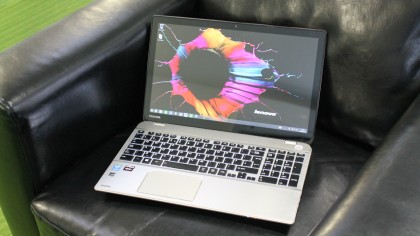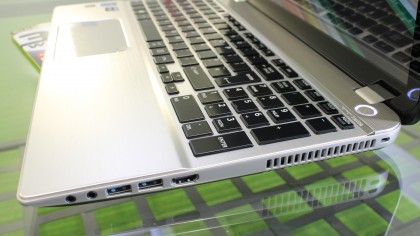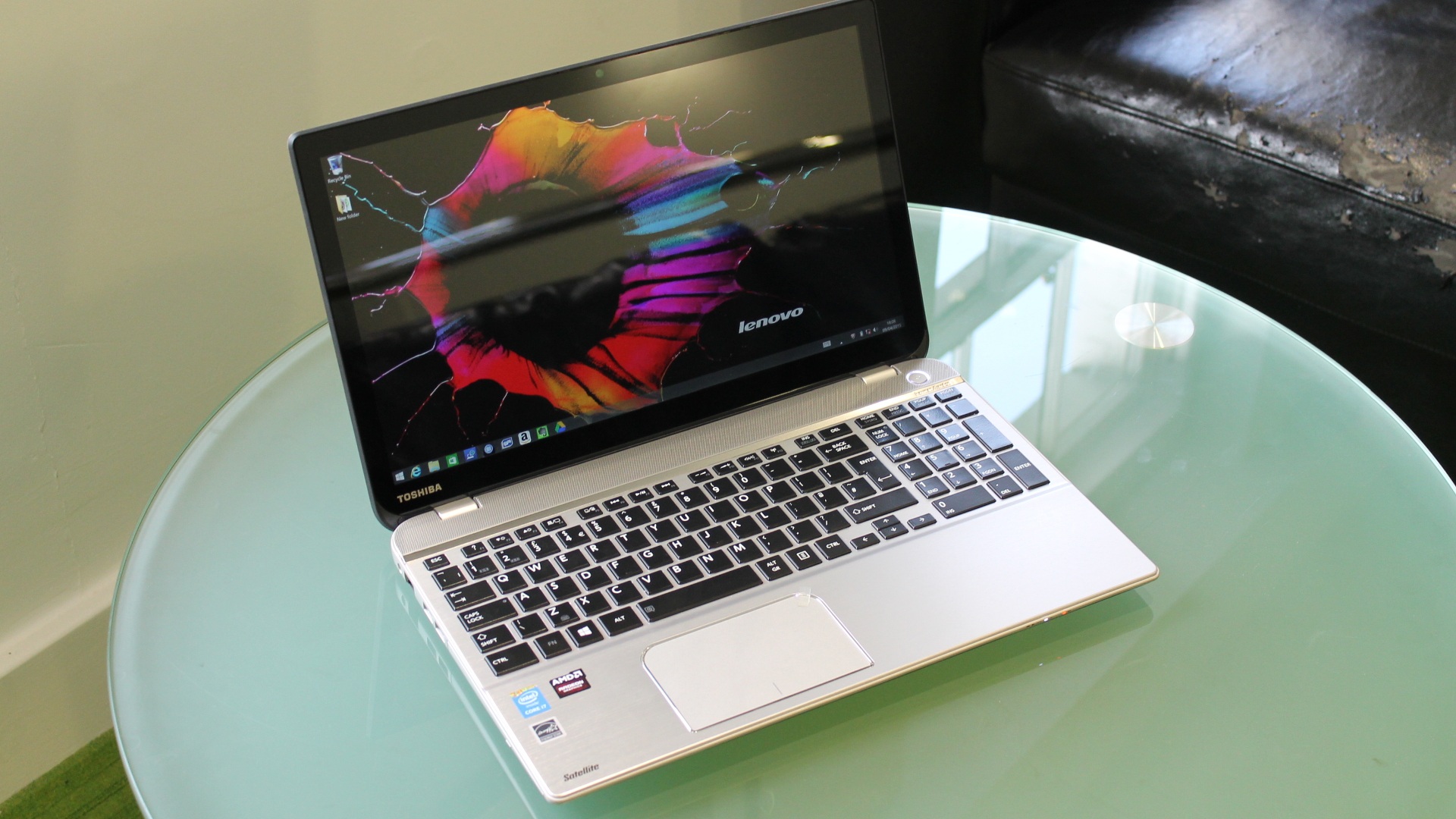TechRadar Verdict
A combination of a terrific 4K display and Blu-ray drive make the P50t suitable for movie buffs seeking a solidly-built notebook. Whether you'll get to the end of a film on that battery is another matter.
Pros
- +
Fantastic screen quality
- +
Reliable build
- +
Blu-ray drive
Cons
- -
Noisy
- -
Poor battery life
- -
Average graphics performance
Why you can trust TechRadar
As a touch 4K laptop, Toshiba's business-targeted Satellite P50T B-11D was expected to make an impact, visually at least. Toshiba call it the 'world's first 4K Ultra HD laptop' and claim it delivers 'true colour accuracy', allowing you to see movies, photography and art as the artist intended. To back up that claim, they've crammed some solid hardware in there - but is it enough? And what can it really run?
This is a very different sort of professional laptop, unlike Toshiba's own no-nonsense Satellite Pro R50. Like Toshiba's P55T, this is a statement piece and the price (£1200, about $1800 or AU$2400) reflects that.
Toshiba's stated aim is that this will be the laptop you buy to do high-end video-editing and photoshop work, in place of a Retina MacBook Pro (which, to even get near similar specifications, you're looking almost double). Realistically, it'll be bought by executives because it's both expensive and shiny.
Design
The exterior of the laptop is relatively familiar, looking similar to the Satellite P-50 that we got our hands-on in June 2013. It has a brushed aluminium finish save for the black plastic bezel surrounding the edge of the screen, which turns silver as it runs over onto the screen's back. The metal is pleasantly cool to the touch, and seems relatively robust - it won't bend easily, though it does wobble unduly during touchscreen usage.
Underneath the laptop, there's a lighter black plastic finish, which is relatively resistant too - save for the moulded Blu-ray drive, which has that familiar loose and soft feel, and is the only physical weak point. That said, it's nice to have the option compared to the MacBook Pro when you consider how long it takes to download a 4K movie. The hinges, by contrast are strong despite their plastic surround.

Back on the surface, the light-up keyboard is a nice touch (and useful for those dark long-haul flights, even if the battery would give out three hours in - more on that to follow), with quiet, firm keys. The power button also lights up, and is pleasantly resilient and resistant.
The obvious difference from the P-50 is that 4K screen, but there are other differences too. The laptop no longer has a VGA out on the right, and it has no ports on the rear or front which gives it a cleaner look whether open or closed. That means all the USB and HDMI ports are crammed along the sides, which looks messy when you have a lot plugged in.
Overall, the laptop's design is simple and clean, without being particularly inspired. It doesn't have the elfin delicacy of the Macbook Air but, then, that's not the market it's going for. One strange aspect of its visual language is that, when shut, the curved corners at the back look like the front of the device - almost every time I open it, I try the wrong side first.
4K all the way
But enough shilly-shallying. That 4K display is the core point of this device and everything else has just been built to support it. It has a 15.6-inch display, making it every so slightly larger than the MacBook Pro's, but it's the 3,840 x 2,160 resolution and screen quality that make it stand out. To run that, Toshiba has opted for a AMD r9 M265X graphics chip with 2GB of DDR5 VRAM.

The display looks gorgeous and the ten-point touchscreen is responsive and sensitive to the screen's edges, with accurate inputs even on small on-screen buttons; however, it does finger-mark easily. With the brightness cranked right up, it's just about right for usage - but on the standard power-saving or eco modes it's straightforwardly too dim for comfort. At least the brightness is consistent across the screen, and it has very wide viewing angles.
In terms of colour, the screen's blacks are good and deep, and the colours seem extremely natural and high-contrast. The usual problems of reflection are there for such a glossy screen, which cause distraction even in a low-lit room, but the screen is bright enough at max settings to allay that. However, on battery settings the restricted brightness means it won't be easy to see well outdoors - and unless you fancy lugging a UPS around with you, that means it's effectively unusable outdoors.
